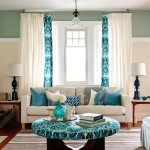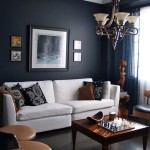Entire Room Decor: A Comprehensive Guide
Entire room decor encompasses the art and science of creating a cohesive and aesthetically pleasing space by carefully considering and coordinating all elements within a room. It involves a holistic approach, moving beyond simply selecting individual pieces and focusing on how these pieces interact to achieve a desired atmosphere and functionality.
Several key principles guide effective entire room decor. Understanding and applying these principles can transform a space from a collection of furniture into a unified and inviting environment. These principles include balance, rhythm, harmony, emphasis, and proportion.
Balance refers to the visual weight distribution within a room. It can be symmetrical, asymmetrical, or radial. Symmetrical balance involves mirroring elements on either side of a central axis, creating a formal and traditional feel. Asymmetrical balance uses different elements of varying visual weight to achieve equilibrium, resulting in a more dynamic and modern look. Radial balance distributes elements around a central point, often creating a sense of energy and movement.
Rhythm directs the eye's movement through the room. It can be achieved through repetition, gradation, or transition. Repeating colors, patterns, or shapes creates a sense of order and predictability. Gradation involves a gradual change in size, color, or shape, adding a sense of progression and depth. Transition uses lines or curves to smoothly guide the eye from one element to another, creating visual flow and connectivity.
Harmony refers to the overall sense of unity within the room. It is achieved by selecting elements that share common characteristics, such as color, style, or texture. A harmonious room feels cohesive and well-put-together, promoting a sense of calm and relaxation.
Emphasis involves creating a focal point within the room. This can be achieved through size, color, texture, or placement. A focal point draws the eye and provides a visual anchor for the rest of the décor. It could be a fireplace, a large piece of artwork, or a statement piece of furniture.
Proportion relates to the size and scale of elements in relation to each other and the room itself. Properly proportioned elements create a sense of balance and harmony. Oversized furniture in a small room can feel overwhelming, while undersized furniture in a large room can appear lost.
The process of decorating an entire room typically begins with planning. This includes defining the room's purpose, determining a budget, and establishing a desired aesthetic. Careful planning helps ensure that the final result is functional, aesthetically pleasing, and within budget constraints. Mood boards and floor plans are valuable tools during this phase.
Selecting a color palette is a crucial step in entire room decor. Colors have a powerful impact on mood and atmosphere. Warm colors, such as reds, oranges, and yellows, create a sense of energy and excitement. Cool colors, such as blues, greens, and purples, evoke a sense of calm and tranquility. Neutral colors, such as whites, grays, and beiges, provide a versatile backdrop for other elements.
Choosing furniture involves considering both function and style. Furniture should be appropriately sized for the room and serve the intended purpose. Style should complement the overall aesthetic of the room. Mixing and matching different styles can create a unique and eclectic look, but should be done thoughtfully to maintain a sense of cohesion.
Lighting plays a critical role in entire room decor. It can enhance the mood and highlight specific features. Different types of lighting serve different purposes. Ambient lighting provides general illumination, task lighting is focused on specific areas for activities like reading or cooking, and accent lighting highlights artwork or architectural details.
Textiles, such as rugs, curtains, and throw pillows, add texture, warmth, and personality to a room. They can also be used to introduce patterns and colors. The choice of textiles should complement the overall design scheme.
Accessories are the finishing touches that complete the look of a room. They can include artwork, mirrors, plants, and decorative objects. Accessories should be chosen carefully to enhance the overall aesthetic and reflect personal style.
The arrangement of furniture and accessories is crucial for creating a functional and aesthetically pleasing space. Furniture should be arranged to facilitate conversation and movement. Accessories should be placed strategically to add visual interest and personality.
Regularly evaluating and updating the décor can help maintain a fresh and inviting atmosphere. This could involve rearranging furniture, adding new accessories, or changing the color scheme. Staying current with design trends can provide inspiration for updates.
Entire room decor is a complex and multifaceted process, but by understanding and applying the principles of design, anyone can create a beautiful and functional space that reflects their personal style and meets their needs. Careful planning, thoughtful selection of elements, and attention to detail are key to achieving a cohesive and harmonious design.

58 Best Wall Art Ideas For Every Room Cool Decor And Prints

77 Best Living Room Decor Ideas 2025 Unique

By Room Top Ideas Living Spaces

Best Room Decorations 15 Latest Decor Ideas By Livspace

60 Easy And Chic Home Decor Ideas To Try From Designers

Extreme D I Y For Home Decor The New York Times

How To Design Your Entire Room Around Prettiest Pillows Yes It Can Be Done Designed

21 Antique Vintage Home Decor Ideas Extra Space Storage

How To Use Color Tie An Entire Room Together Living Colors Designs Trendy Rooms

How To Decorate With Antiques And Vintage Pieces







